Gudjewg — The Wet Season
This page is out of date. It is still here because this site contains a variety of general information like our newsletters and our Covid Blog page which has not yet been uploaded to our new website.
For up to date information about specific trips, see our new mobile-friendly website.
For up to date information about specific trips, see our new mobile-friendly website.
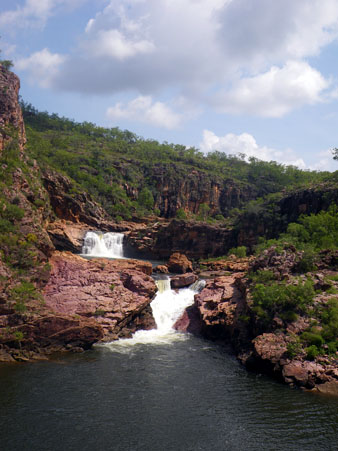
The monsoon season, called Gudjewg in northern Kakadu and Jiyowk by the Jawoyn people in the southern part, is a time of heavy rain and flooding. the heat and humidity generate an explosion of plant and animal life. Many local bushwalkers believe that this is the best time to go bushwalking. They have experienced it and they know.
Sadly, most people who have never experienced the tropical summer have a variety of misconceptions about the tropical summer which keep them from trying a trip which could be a truly memorable experience.
Look at the waterfall picture at right, taken in January. Everything is lush and green. The waterfall is flowing well. If you come in the middle or late dry season and most of the green will be gone. The waterfall will have dropped to a trickle. The picture doesn't show that we have Koolpin Gorge to ourselves. In the dry season, we would be sharing it with others — sometimes with many others.
The wet season is the only time you can enjoy popular places like lower Koolpin Gorge, Twin Falls, Jim Jim Falls, the Bungle Bungles and many other places without day tourists.
Look at the pictures below. Every one of these pictures was taken in the wet season. Do the people look miserable or do they look like they are enjoying themselves?
Leave your pointer on the photo and you'll see a caption. Click the photo for an enlarged view. Click the back button to return to this screen.
Popular Misconceptions
- It rains all day, every day. You can never get dry.
- It's too hot, much hotter than the dry season.
- Walking in the rain is uncomfortable. You'll feel cold and miserable just as you would in a colder climate.
Humbug!! That's Not True!
In recent years, a majority of our wet season clients have been people who have done one of our wet season trips before or who have come based on recommendations from friends who have done one. This would not be happening if the Wet didn't have something very special to offer.
But don't take our word,look at the figures for Jabiru from the Australian Bureau of Meteorology. Jabiru is typical of the areas where we walk, somewhat wetter than most.
Look at the mean number of rain days and the average hours of sunshine (bottom of table). On average it rains only 2 days in 3. On average, you get a bit more than six hours of sunshine every day. That's the same percent of sun in daylight hours as you get in Sydney!
Look at the mean daily maximum temperature. It's only 2°C warmer than the coolest months of June and July. It's 4°C cooler than the Build Up month of October.
Look at the mean daily minimum and lowest minimum rows. From January through March, the average minimum is about 24°C; the lowest temperature ever recorded is about 20°C. You're not going to get cold no matter how much it rains. You certainly don't need to carry a sleeping bag.
The Bureau of Meteorology doesn't lie. In January, Brisbane, Sydney, Melbourne, Adelaide and Perth all average more 35°C days than Darwin. We want people to learn the truth about our wet season climate so we've prepared a Climate Statistics sheet comparing the January averages in Darwin, Kakadu and the Kimberley with those in Brisbane, Sydney, Melbourne, Adelaide and Perth. Click the link and see for yourself.
How can people get it so wrong? My best guess is that people confuse the Build Up with the Wet. Have a look at the figures for October and November in the Jabiru table above and you'll see what I mean. People who talk only about the 'Wet' and the 'Dry' do northern Australia a great disservice. It may be difficult for people who don't spend a lot of time in the bush to distinguish the Aboriginal six seasons in Kakadu, but anyone who has lived here can easily distinguish the Build Up from the Wet and the Dry. The link will give you the basics but the full story will have to wait.
There's more, much more. Have a look at our Wet Season — What to Expect page and see for yourself. There are lots of photos so the page might take a while to load.
The link above and the link at the bottom of that page both contain information which is not yet on our new website
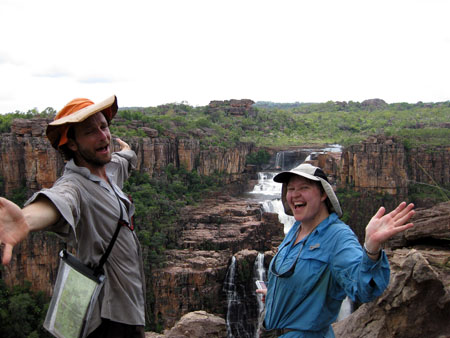
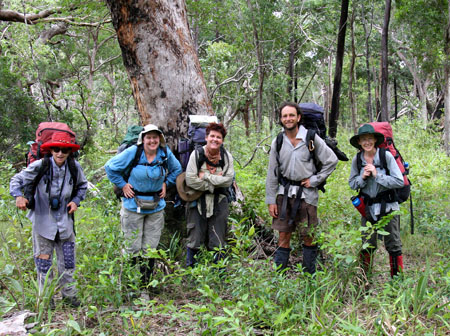
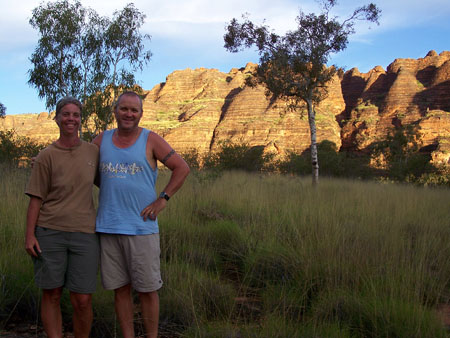
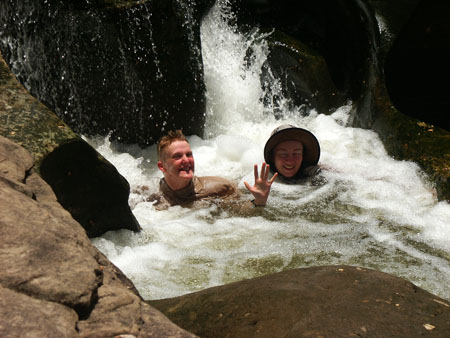
 share
share